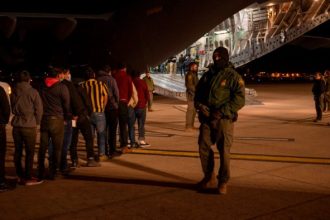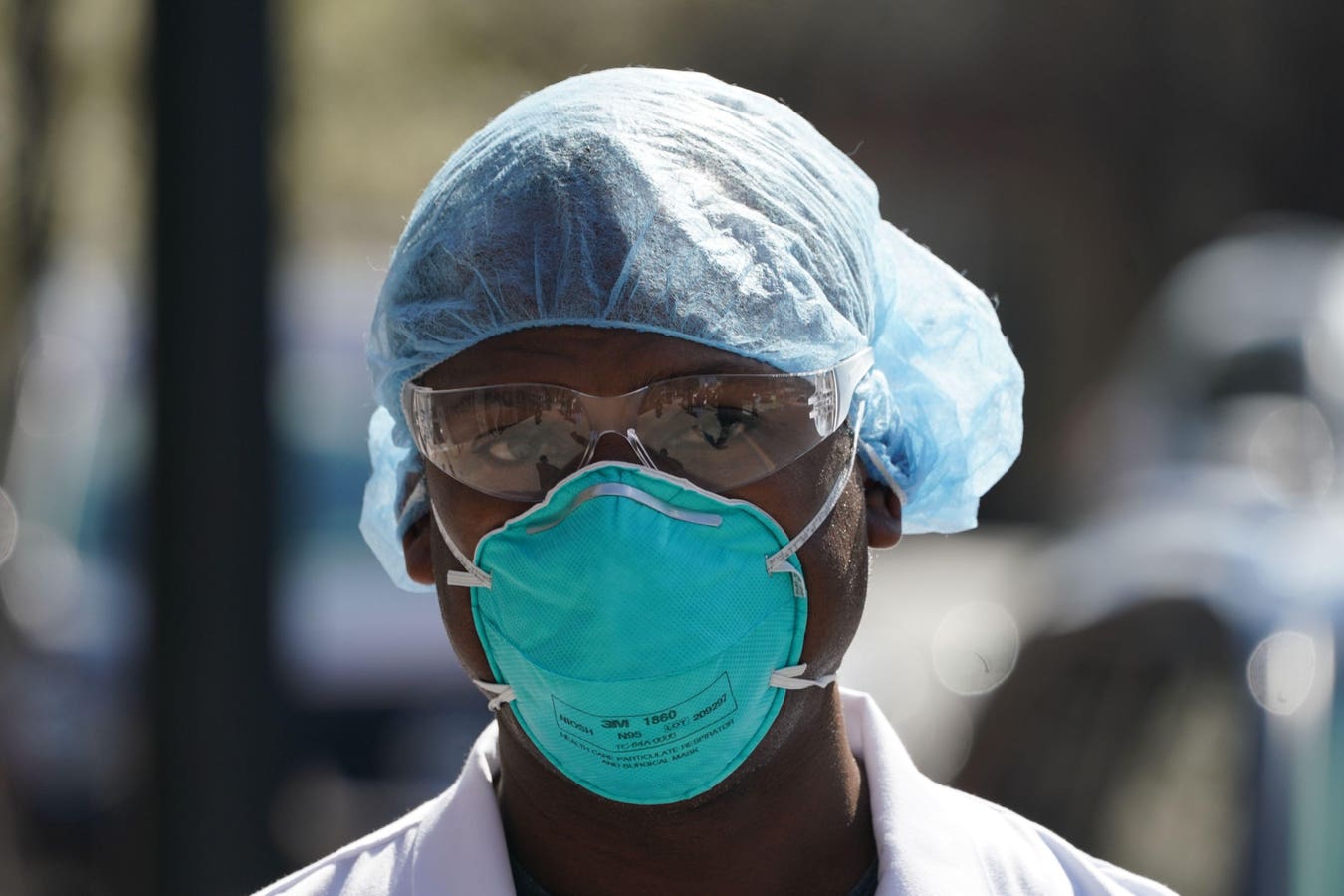Last June, an obscure federal advisory committee—the Healthcare Infection Control Advisory Committee to the Centers for Disease Control—first shocked many in the public health community by suggesting that the CDC could loosen infection control practices in hospitals and healthcare settings. Their most controversial recommendation was that surgical masks (aka “baggy blues”) could generally be substituted for the more protective N95 respirators. This was despite their own data showing that respirators provide superior protection.
Last fall, the CDC advisory committee sent their formal recommendations for revising infection control in healthcare facilities to the CDC director. During the public comment period, there was considerable pushback from patients and families. Concerns centered around immunocompromised people fearing to seek care because staff refused to mask, people acquiring infections in the hospital, and the issue of masking versus the use of N95 respirators. The CDC did not accept the HICPAC committee’s recommendations and sent them back to the committee for revision and comment on several questions relating to transmission and protection.
Months later, the HICPAC met again, but they have not yet resolved the questions or concerns. Here are the issues raised by the CDC.
Are Surgical Masks Enough For Bugs Spread By Air?
The first question was whether surgical masks or NIOSH-approved N95 [or higher-level] respirators should be used for pathogens that spread by the air.
Erica Shenoy, MD, PhD, Chief of Infection Control at Mass General Brigham, and a prominent committee voice who has published against masking in healthcare settings, argued that wearing an N95 respirator for initial patient contact was excessive. She told the committee that her practice is to go into a patient’s room (without a respirator), ask a few questions, and then determine the level of protection needed. I understand that since I sometimes did the same—but that was long ago, and when I suspected my exposure would be minimal during that brief period.
Times have changed. We now are still in the midst of a COVID-19 pandemic—despite pronouncements to the contrary—with a virus that we know has airborne transmission. Further, long Covid develops in at least 10% of those infected and often has life-changing consequences. These include autoimmune diseases, dysautonomia (autonomic dysfunction causing fainting, pulse and blood pressure swings, and more), and chronic disabilities. Since we know COVID is a disease transmitted through the air, wearing an N95 respirator for the initial patient encounter and then downgrading the precautions when COVID has been ruled out makes sense.
OSHA and NIOSH clearly state that surgical masks provide inadequate protection. OSHA says, “Surgical masks are not designed or certified to prevent the inhalation of small airborne contaminants.” NIOSH concurs, concluding a surgical mask “is not considered respiratory protection.” Yet HICPAC, with one exception, concluded that they were equivalent.
Wearing an N95 respirator will become even more critical as bird flu becomes more widespread, particularly if/when it mutates to be readily spread person-to-person. Highly pathogenic avian influenza H5N1 can be spread by direct contact with animals or contaminated surfaces, by ingesting milk, or by inhalation. Some data says that airborne transmission of HPAI H5N1 is not very efficient. A significant concern is that influenza viruses mutate readily and might acquire mutations that enhance their ability for airborne transmission. The first case of the bird flu with “no immediate known animal exposure” was in Missouri in September. There is now a critically ill teen with respiratory failure from avian flu in British Columbia, Canada.
Should Healthcare Workers Be Allowed To Wear N95 Masks?
Question 2 related to the classification of pathogens and when different types of precautions would apply. Influenza is classified as requiring “standard” and droplet precautions in the 2007 guidelines, which are under revision now. This would mean a surgical mask would be adequate.
There was considerable discussion about whether a health care worker (HCW) should have the flexibility and right to decide what level of respiratory protection they felt necessary, based on their own health and that of family members they might be exposing to disease.
In the non-binding vote, almost all members supported the idea that HCWs should not be given that voluntary right.
Peg Seminario, the director of occupational safety and health for the AFL-CIO from 1990 to 2019, told me employers believe they know best and that workers “don’t really know when they should be wearing this respiratory protection. And also, that it upsets patients.” Seminario also said, “I think the decision-making reflects the continued domination of the infectious disease professionals who represent healthcare hospital interests,” who already feel regulations are too burdensome.
“The reasons they gave were, frankly, very paternalistic,” is how Lisa Baum, an Occupational Health and Safety Specialist with the New York State Nurses Association, described this decision-making process. “They know what’s needed in terms of protection, and if they determine that a respirator isn’t needed, then a respirator isn’t needed, period,” she added.
The HICPAC Membership Doesn’t Meet Its Own Requirements
The World Health Network has filed a supplementary complaint to the Health and Human Services Inspector General because their committee is supposed to have fourteen members with diverse backgrounds, but they don’t. Experts in airborne transmission are still not voting members. Also, many of the members “are from management positions in hospitals that benefit financially from treating healthcare-associated infections (HAIs)” with “perverse financial incentives that prioritize treatment over prevention.” The Isolation Precautions Guideline Workgroup “operates in secrecy, in violation of FACA’s requirements for transparency and public involvement.”
The fourth question concerns “source control,” or whether HCWs, patients, and visitors should mask in hospitals. The HICPAC—again with one dissention—voted that this should be left to local decision-making.
When And Where Can Infected Healthcare Workers Return To Work?
Finally, there was discussion in the Infection Control in Healthcare Personnel Working Group as to when HCWs recovering from flu or Covid could return to work. If they’re working with people who are at high risk, immunocompromised, other reasons, you know, should there be special places, conditions, where they should not be assigned?
The committee recommended only a 3-day work restriction from the onset of symptoms, even if the HCW is still symptomatic, if they are improved and afebrile—this, despite abundant data that many people shed SARS-CoV2 virus for ten days or more. The HCW should wear a surgical mask for 7 days from onset. There were also no recommendations to restrict ill HCWs from caring for high-risk or immunocompromised patients because “it is not feasible.”
Baum was the sole dissenting vote on almost all of these questions. Notably, she was also the only committee member who was masked during the meeting. Baum was particularly disturbed by this decision, as “many employers pressure healthcare workers to come back to work after the number of days that the CDC lists workers should be excluded from work, even if the worker is still feeling too ill to work.”
Opposition To HICPAC Recommendations
Before vaccinations, the mortality of patients hospitalized with COVID-19 was close to 30%. The mortality rate of hospital-acquired Covid has decreased with multiple vaccinations, but is still 10% or higher. This is still higher than community-acquired infection. So it makes sense that hospitals should do what they can to prevent transmission within the hospital so prevent these needless and avoidable deaths.
As I noted previously, “More than 900 experts in infectious disease, public health, industrial hygiene, aerosol science and ventilation engineering signed a letter to Mandy Cohen, M.D., the new CDC director, explaining how the new draft guidelines weaken protections for healthcare workers. They state, “Surgical masks cannot be recommended to protect health care personnel against inhalation of infectious aerosols.”
Furthermore, as with earlier HICPAC meetings, numerous public comments protested the committee’s decision. Many patients are afraid to seek care now, knowing that they risk becoming infected in the hospital or doctor’s office. One commenter, Amanda Finley Diggs (@rubyslippahs) is a Covid long-hauler, ardent masking advocate, and defender of vulnerable patients. She urged HICPAC, “Please step up and fulfill the public mandate in your very name: the Centers for Disease Control **and Prevention.**”
Baum said, “There are still those on HICPAC who refuse to accept that this is happening on a widespread basis, that there is exposure and infection occurring in the healthcare environment.” Neither professional nor public concerns appears to have any impact on HICPAC’s decision-making process.
The HICPAC also seem oblivious that NIH has resumed requiring masking in all patient care areas and testing for SARS-CoV-2, Influenza A, Influenza B, and Respiratory Syncytial Virus (RSV) on inpatients. Sonoma County also requires masking in all hospitals. But #HICPAC thinks masks are unnecessary.
Despite her frustrations, Baum stressed, “We actually strongly support the CDC.” She added, “It is our job to push them to protect patients and staff better and to follow the science better, but we want them empowered to do so.”
Note: You can still submit comments until November 22, 2024 Email [email protected] if you want to advocate for isolation of infectious staff + ASHRAE 241 indoor air standard + N95s in healthcare.
Note: Dr. Shenoy and the CDC/HICPAC have not yet responded to a request for comment.
Read the full article here





